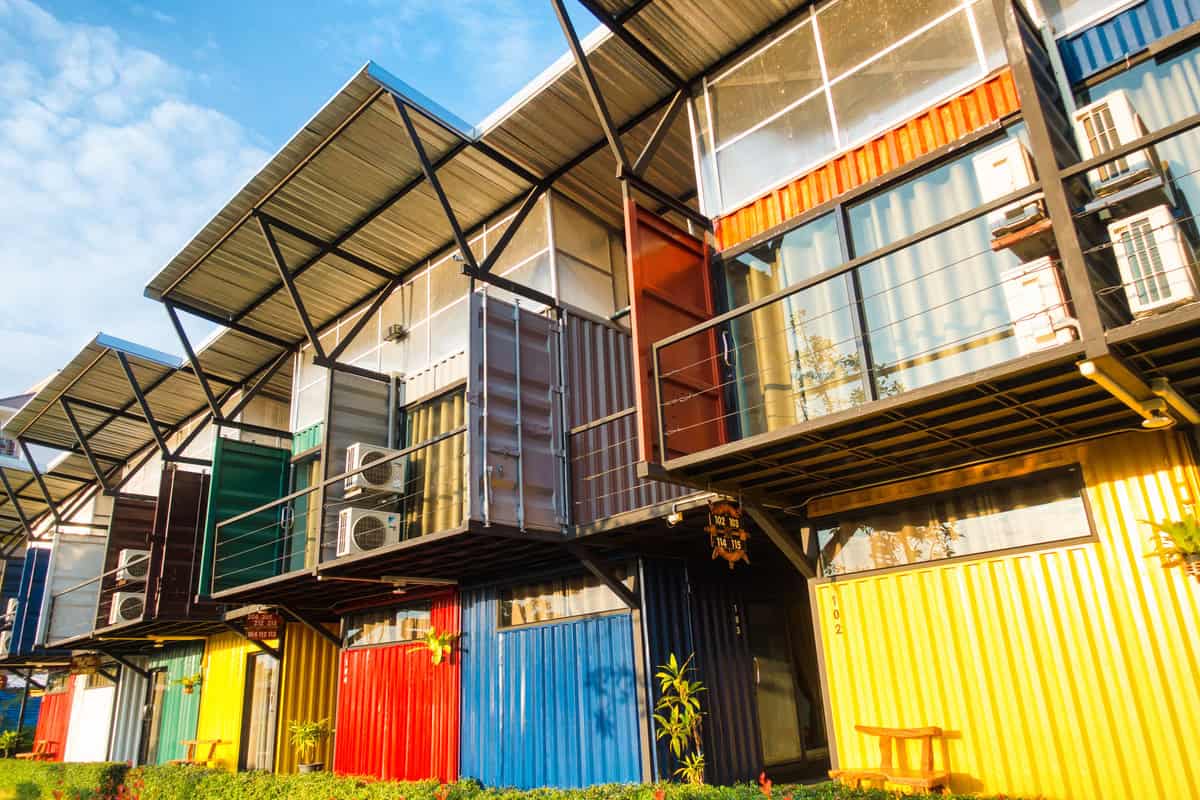
Pros And Cons Of Investing In Shipping Container Rental Homes
Are you weary from the steep costs and scarce options in traditional real estate investment? Many investors share your frustrations, facing barriers that seem insurmountable. Yet, there’s a creative and practical alternative emerging: shipping container rental homes.
These units present a compelling blend of affordability, innovation, and availability. This article explores the distinct advantages and challenges of this non-traditional investment avenue. Shipping container homes have the potential to transform your approach to property investment.
Pros
Shipping container homes introduce a refreshing edge of cost-effectiveness in the real estate market. Here’s why they’re seen as a financially viable option.
1. Cost-Effectiveness
Shipping container homes shine in affordability, both in acquisition and maintenance. Typically, the cost to purchase and convert a container into a livable space is significantly less than traditional housing investments.
Furthermore, ongoing maintenance expenses are minimal due to the durable nature of shipping containers. This durability translates into fewer repairs and lower upkeep costs over time, making shipping container homes a financially appealing option for savvy investors seeking to enhance their portfolio without breaking the bank.
2. Sustainability
Repurposing shipping containers for homes is not only innovative but also eco-friendly. This approach aligns with sustainable practices by reducing waste and utilizing existing materials.
Shipping container homes can meet various green building standards. By retrofitting containers, investors contribute to the reduction of the carbon footprint typically associated with new construction materials.
These homes often qualify for certifications like LEED, recognizing their energy efficiency and lower environmental impact. This sustainable angle not only benefits the planet but also attracts tenants and buyers who value eco-friendly living solutions.
3. Flexibility And Scalability
Shipping container homes excel in adaptability. Their modular design allows for easy modifications and scalability.
These homes can be quickly adapted to meet changing needs. For instance, containers can be stacked to craft multi-story residences or expanded sideways for larger floor plans.
This modularity is perfect for investors looking to start small and expand their property as demand grows. The ease of relocating these units also adds to their versatility, offering a portable solution that traditional homes simply can’t match.
4. Rapid Deployment
One of the most compelling advantages of shipping container homes is their rapid deployment. Unlike traditional construction, which can take months or even years, a shipping container home can be made habitable in a matter of weeks.
This speed is due to the prefabricated nature of the containers, which are essentially ready-made building blocks. The ability to quickly set up and deploy these homes makes them ideal for responding to housing crises, providing temporary accommodations, or capitalizing on swift market changes.
Investors can benefit from shorter construction timelines, reducing labor costs and accelerating the return on investment. This rapid deployment not only enhances efficiency but also allows for quick adaptation to evolving real estate markets.
 Cons
Cons
While shipping container homes offer numerous benefits, they also come with specific challenges that potential investors must consider.
1. Regulatory And Zoning Challenges
Securing building permits for container homes often presents several regulatory challenges, varying widely from one location to another. The complexity of navigating these regulations can be daunting, with each locality having its own set of rules regarding non-traditional structures.
Furthermore, zoning issues frequently arise, as many zoning boards are unprepared to classify these innovative homes within traditional frameworks. This can lead to delays, increased costs, and sometimes even project cancellations.
For investors, these regulatory and zoning obstacles can significantly complicate the investment process, potentially impacting the overall feasibility and attractiveness of shipping container home projects.
2. Market Perception And Acceptance
Market acceptance poses a significant challenge for shipping container homes. Despite their benefits, these structures sometimes face skepticism.
There’s a noticeable stigma associated with living in repurposed containers. Potential renters and buyers often hesitate, perceiving these homes as less desirable than traditional structures. This skepticism can directly affect rental yields and resale values.
Furthermore, the novelty of container homes means they’re less familiar to the general market, which can lead to slower sales or rentals compared to conventional homes. Investors must navigate these perceptions carefully to maximize their returns and ensure the success of their container housing projects.
Conclusion
Shipping container homes stand out as a cost-effective, sustainable, and flexible real estate investment opportunity. However, they also face regulatory hurdles and market skepticism that can complicate their adoption.
To navigate these challenges and capitalize on the benefits, consider strategic approaches. Partnering with experienced builders can provide crucial insights and streamline the construction process. Additionally, targeting emerging markets with favorable regulations can reduce legal complexities and boost profitability.
Lastly, emphasizing unique design features can increase attractiveness to potential renters and buyers, enhancing your investment’s appeal. By focusing on these strategies, you can better leverage the innovative potential of shipping container rental homes.













 Accessibility
Accessibility